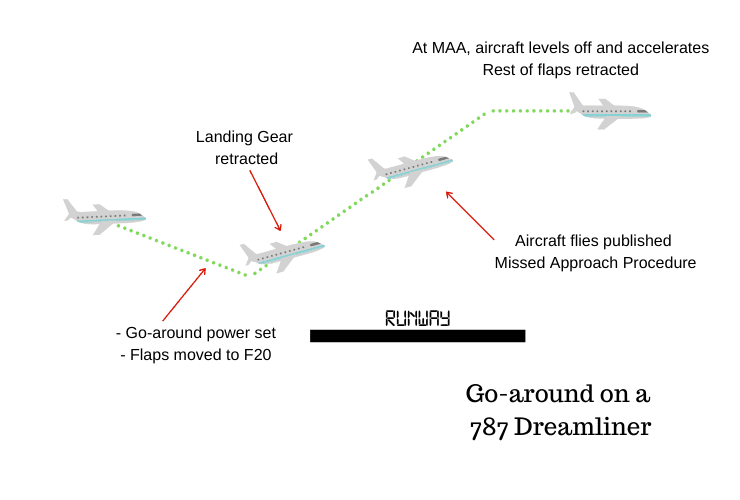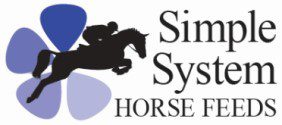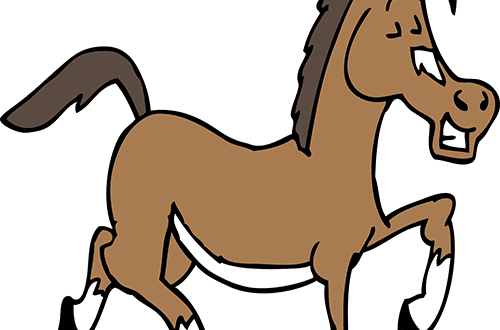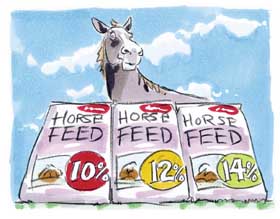
Landing rejection
Landing rejection
Anamnesis:
The horse does not stand when landing – it tramples, goes somewhere. Moreover, it’s not just not worth it, but in every possible way is indignant about the landing. At some moments, it is simply unacceptably indignant. Tries to bite, and sometimes beat off a person! It seems that people are trying to figure it out, but over time the situation does not change much. Another important detail is that the horse used to work at the box office, not the best.
My deepest conviction is that if the horse is in good health and content, if there are no reasons for physical and moral discomfort, then he will most often behave adequately. If at the same time the behavior leaves much to be desired, it simply means that you need to work a little on her upbringing and motivation. And this applies to any “problems”, regardless of their severity.
But the protest of such force in this situation, it seems to me, suggests that the horse is most likely experiencing some discomfort … or memories of it. Which, in general, is not surprising – she worked for several years in a shabby box office. Surely the saddle was “one for all”, and the load “for five”. My first advice in such situations is to first check your health and equipment, invite a veterinarian to clarify what the horse has with his back, carefully check whether the saddle fits the horse.
It also recalls a cute mare with a not very rosy past, which under the top from time to time cursed in every possible way. Even with a saddle made specifically for her back. The hostess is a stubborn lady, she and the doctor got to the bottom of the reasons – the problem was in the back and spine. It was noticeably curved in the horizontal plane. The hostess did massages, the mare was pricked with needles, smeared with ointments … Of course, in parallel with this, she worked with the mare for obedience and trust. After a fairly long period of time, the back became noticeably better and began to straighten out. But after some time, the mare again began to “complain” under the top. The reason was quickly found. For the back was already noticeably straightened and overgrown with muscles, but the saddle was matched to its past state. We checked how is sitting saddle, and decided to abandon it. The horse began to behave more and more adequately.
This is what I need. When working on obedience and trust, you need to be sure that the horse does not have any “holding” factors, such as problems in health or equipment. Dealing with them in parallel, we will greatly facilitate the task for ourselves and the horse.
So, back to the situation. Have you checked your health? If there are indications for treatment, I would start treating, refusing to work on horseback for a while. When a horse has a backache, you need to have VERY great authority “among him” to take his mind off the pain for the sake of the rider. And do we need it? In addition, this does not cancel the work on the ground. And by working on the ground, you can achieve a lot in terms of the right motivation and in terms of discipline. Yes, and all sorts of useful elements can first be learned on the ground – then it will be on horseback easier to work with them.
Have you checked your seat? If there is any doubt that it fits, I would also put it aside and look for a suitable one. And at this time – either would go without a saddle, or (if there are also back problems) worked on the ground. Of course, I would not dismount forever, but for the time of selecting a saddle and treating my back – definitely.
When these parameters are taken into account, you can deal with the problem itself. Here, the past “memory” of the horse may also come up. Even if the back is no longer sore and the saddle is appropriate, the horse may still have a “pain memory” of being mounted and ridden in a “sick condition” in the past. Try to point your finger in the side every time you meet your friend. Honestly, when after a couple of days of such experiments you simply bring your hand to your side in a similar gesture, it will bend to the side, as if it had received a poke. This is the “memory”, of course, not “pain”, but some kind of irritating effect. The same thing happens with horses.
I would start solving the problem from the saddle itself. How does the horse feel about the saddle? Does he stand still or tread lightly? Pouting when tightening the girth? Rat at the sight of a saddle or a saddle pad? Is it possible to saddle her not at interchanges, but, say, on the street, hanging a lead rope on her elbow?
If there are any problems with this, I will solve them. Simple training. If the horse does not stand still when I put on the back of the saddle pad – I’ll start with him. The principle is simple. Put on and take off, put on and take off. When the horse relaxes and stops trampling, stop this action for a while. After a pause, we start again. When the horse is standing perfectly still while padding is placed on it, you can move on to the saddle. They do exactly the same with him. It is important to clearly capture the moment at which you need to make this pause.
Also, the horse should be calm about manipulating the saddle when it is already put on it. Like this: if I pat the wing of the saddle or the putlische, holding the stirrup, poke the horse in the side with the stirrup, etc.
You can, of course, these items and omit. But trust me, if a horse is suspicious of such manipulations, it will not make it easier to “disassemble” a problematic seat.
What to do with the landing itself. In this case, the horse is already trampling when the person puts his foot in the stirrup. Therefore, you need to start with learning. Again, the principle of training will be the same whether we are training a horse to spray or to sit. No need to tie the horse to the fence or ask someone to hold it. Just keep the rein loose in your hand. We bring the foot to the stirrup, lower it, bring it in, lower it. If the horse goes somewhere at the same time, by moving the hand with the rein up and back and slightly to the side, stop it, but you do not need to constantly hold it with the rein. As soon as the horse stops stomping, lower the leg completely, stroke the horse, pause. It is also important when landing that the horse’s nose is slightly turned in your direction. Just a couple of centimeters. If it is turned outward and the horse decides to “get out of here”, it will be more difficult to stop him than if the nose is turned in our direction.
We repeat our gymnastic exercises with the foot in the stirrup. Maybe someone will find this funny and they will make fun of you … but who said that it would be easy? But then … and the horse will stand when landing, like a monument, and we will have useful fitness and slender legs.
When the horse is standing still, when you put your foot in the stirrup, it is better to pause a little more. I might even have walked with her about a couple of small volts. Then start putting your foot in the stirrup again. Most likely, the horse will try to walk again, it’s okay – this time it will calm down much faster. So, the horse has stopped resisting and freaking out when you put your foot in the stirrup. Now let’s try to stand in the stirrup. Before doing this, it is good to make sure that the horse takes the “twisting” pressure of the saddle on the back calmly. When landing, when the rider “steps” on the stirrup, no matter how quickly he sits down, there is still twisting. Horses are the same may not like it. For starters, it’s better to just “press” your hand on the stirrup. If everything is fine, you can continue. We stood in the stirrup, rose a little, lowered, removed the leg. And so – until the horse relaxes. We pause and start again. If the horse decides to go at this moment, we simply pick up the reins towards the withers and stop (by the way, if the horse already knows lateral flexion, the attempt will be more successful). At the same time, you should not “go off the board” if the horse begins to shift from foot to foot – this will be the wrong moment to relieve pressure!
When the horse is accustomed to this, we move on to the next step – we stand in the stirrup. To reduce the “twisting”, we transfer the main weight to the saddle – we stay as close as possible to the horse, rest our hips on its side and slightly transfer the body through the line of the spine, we also lean with our free hand on the saddle from the opposite side. We stood for a couple of seconds – dismounted. If the horse at the same time decides to go somewhere, we pick up a rein and stop it. Stopped – hurry up. Usually this step is much faster. After a longer pause, we proceed to the landing itself. They sat in the saddle, scratched the horse’s neck, and dismounted.
Here we should not forget that a horse with a rental past and “memories of pain” may at this stage show its dissatisfaction: of course, it immediately began to work after that, and it was not always pleasant. That is why you need to hurry up. This will slightly surprise the horse, and also teach that not every landing is a reason for further work.
I must say that you have to constantly monitor the behavior of the horse. If you have already moved on to the saddle stage, and the horse suddenly begins to resent and stomp when lifting the leg to the stirrup, do not be surprised, it happens – just linger a little on the leg lift stage. And when the horse relaxes, we will continue the training.
Another important thing: I always saddle, sit down and dismount on both sides. Horses with a history can be “one-sided” in terms of seating and saddle. Why not fix it? Everything happens in life, so .. maybe this will come in handy. It is necessary to accustom to landing on the other side after the horse is ideally standing when landing on the usual side. Let’s start from the very beginning.
I will focus on the issue of discipline. If a horse begins to threaten when you try to get on him – whether he clicks his teeth in my direction or kicks his leg – I will stop it sharply and peremptorily. You know, even if the horse is doing it because his back is still hurting, or just because he has a “memory of pain,” in this case, I DON’T CARE. This is perhaps the only moment when I will interrupt my leg raise fitness in the stirrup. If the horse snaps his teeth in my direction, I will sharply block with the edge of my hand or elbow. If the horse continues to clatter and try to bite me after that, I will block again, after which I will ask you to yield to the front. And not softly, smoothly, but cheerfully. It’s a matter of discipline. Not a punishment, but the expulsion of a part of the horse’s body from his bladder. The same with the swinging leg. If, when clattering my teeth, I first just set up a block, then in the case of a flying foot at me, the horse will get on the backside. And he will throw it away. At first, once. If he continues to persist, or even starts to kick more accurately, he will throw back his butt until his face clears up. Yes, that’s how bad it is. Kicks in my direction are a manifestation of an extreme degree of disrespect for a person, moreover, dangerous. Therefore, if the horse already has such a tendency, I will immediately take in my free hand, for example, a lead lead. And with a wave of my foot, I will slap the lead on the croup so that the horse throws back its rear. This is not a blow in punishment, namely, the kickback of the buttocks. Again, we expel a part of the horse’s body that is dangerous for us from our space. If it is to leave the horse’s trick unattended and just remove the foot from the stirrup, try to dodge, the horse will be delighted: “I scare it with my foot, and it lags behind with its landing, how great!” If this behavior is corrected every time, the horse will soon give up his attempts at threats. (Here again, I want to remind you that if, in general, a kindly and easy-to-communicate horse threatens with its teeth or legs when landing, I would think a lot about its physical condition).
Well, another useful thing. Whenever you sit in the saddle, do not move immediately. Make it a rule to linger on this moment. You can straighten your clothes, take the stirrups more comfortably, just sit. Even if the horse is standing still, we can provoke it by the fact that every time we sit in the saddle, we immediately begin to move. And then, when the horse takes a step right after landing, we close our eyes to this, we were going to go anyway. A half-minute pause before the trip will not delay you much, but the benefits of it will be huge.
PS: Everything written will work with both a fresh horse and older horses. If an experienced adult horse does not know how to do something right, we can teach it.
Natalia Gerasimova (Olmek). The material is posted with the permission of the copyright holder (RideWest.Ru)





